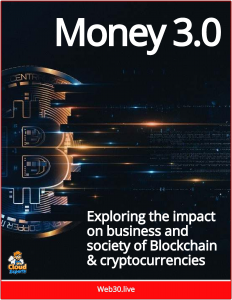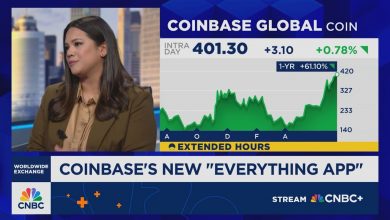 The world of finance is undergoing a seismic shift, one that promises to redefine how value moves across borders, how businesses operate, and how individuals interact with money.
The world of finance is undergoing a seismic shift, one that promises to redefine how value moves across borders, how businesses operate, and how individuals interact with money.
At the heart of this transformation is the rise of stablecoins—digital currencies pegged to stable assets like the U.S. dollar or euro, offering the speed and transparency of blockchain technology without the volatility of traditional cryptocurrencies.
With a market capitalization surpassing $230 billion in 2025 and transaction volumes rivalling those of global payment giants like Visa, stablecoins are no longer a niche experiment; they are becoming a cornerstone of the global financial infrastructure.
But this is more than a technological evolution—it’s a movement toward a more inclusive, efficient, and innovative financial ecosystem. Companies like Stripe and SpaceX are leading the charge, leveraging stablecoins to solve real-world challenges, while regulatory clarity is unlocking unprecedented opportunities for crypto startups.
Meanwhile, the intersection of artificial intelligence (AI) and crypto is sparking a new wave of innovation, reimagining how we transact, secure, and scale financial systems. This is the dawn of a new era, and the possibilities are as inspiring as they are transformative.
Stablecoins: The New Rails for Global Payments
Stablecoins have emerged as a game-changer in the world of payments, offering a solution to the inefficiencies of traditional financial systems.
Unlike volatile cryptocurrencies like Bitcoin, stablecoins maintain a steady value, making them ideal for everyday transactions, cross-border remittances, and corporate treasury management. Their ability to facilitate near-instantaneous, low-cost transfers—often costing less than $0.01 compared to $12.13 for traditional methods—has made them a compelling alternative for businesses and individuals alike.
The real-world utility of stablecoins is particularly evident in emerging markets, where they are bridging gaps left by outdated banking systems. In regions with volatile currencies, such as Argentina or Nigeria, stablecoins like USDC and USDT provide a hedge against inflation and enable seamless access to the global economy. For example, a U.S. company receiving payments in Brazilian reais can use stablecoins to avoid losses from fluctuating exchange rates, streamlining transactions and reducing costs.
This utility is not theoretical—it’s happening now. In 2024, stablecoins processed over $5.5 trillion in adjusted volume across 1.2 billion transactions, with cross-border payments alone reaching $50 billion per month. As Stripe’s CEO, Patrick Collison, aptly stated, stablecoins are “room-temperature superconductors for financial services,” enabling lossless value transmission that is open, instant, and borderless.
Corporate Pioneers: Stripe and SpaceX Embrace Stablecoins
Leading companies are not just observing this shift—they’re driving it. Stripe, a global payments powerhouse processing $1.4 trillion annually, has made a bold move into the stablecoin space with its $1.1 billion acquisition of Bridge, a stablecoin infrastructure startup, in 2024.
This acquisition, the largest crypto-related purchase by a mainstream payments firm, underscores Stripe’s belief in stablecoins as a transformative force. In May 2025, Stripe launched Stablecoin Financial Accounts, allowing businesses in 101 countries to hold balances in stablecoins, send and receive funds via both crypto and fiat rails, and issue stablecoin-linked Visa cards for seamless spending at 150 million merchants worldwide.
By charging 1.5% for stablecoin transactions—30% lower than its standard card fees—Stripe is not only improving margins for businesses but also positioning itself to compete directly with traditional payment networks like Visa.
For example, a U.S.-based retailer with stores in London can now accept payments in GBP, hold a GBP balance, and pay UK suppliers without incurring costly foreign exchange fees. This is a glimpse of a future where businesses operate with unprecedented efficiency, unburdened by the friction of legacy systems.
Similarly, SpaceX, led by visionary entrepreneur Elon Musk, is leveraging stablecoins to optimize its global treasury operations. Through its Starlink satellite internet service, SpaceX accepts payments in local currencies in volatile markets like Argentina and Nigeria, converting them into stablecoins to mitigate currency risks and repatriate funds efficiently. By partnering with Bridge before its acquisition by Stripe, SpaceX demonstrated how stablecoins can solve real-world challenges for multinational corporations, paving the way for broader adoption.
These corporate trailblazers are proving that stablecoins are not just a crypto curiosity but a practical tool for businesses navigating the complexities of global finance. Their adoption signals a broader shift, where stablecoins are becoming integral to corporate strategy, from treasury management to payroll solutions like those offered by startups such as Rise.
Regulatory Shifts: A New Dawn for Crypto Startups
For years, regulatory uncertainty has been a significant barrier to crypto adoption. However, 2025 marks a turning point, with governments worldwide introducing frameworks that provide clarity and legitimacy to stablecoins.
In the United States, proposed legislation like the GENIUS Act and the STABLE Act aims to establish clear standards for stablecoin issuers, requiring one-to-one reserves, regular audits, and robust consumer protections. In Europe, the Markets in Crypto-Assets (MiCA) regulation, fully implemented in 2024, has set a global benchmark by mandating transparency and compliance for stablecoin issuers, enabling institutions like Societe Generale and Deutsche Bank to issue euro-backed stablecoins.
Regions like Singapore, Hong Kong, and the UAE are also fostering innovation through crypto-friendly policies. For instance, Abu Dhabi’s ADGM has created regulatory sandboxes that allow fintech firms to experiment with stablecoin payments, while a UAE court ruling in 2024 permitted salaries to be paid in crypto, reinforcing its position as a digital asset hub. These developments are reducing barriers to entry, enabling crypto startups to scale and compete with traditional financial institutions.
This regulatory clarity is a boon for entrepreneurs. As David Pakman of CoinFund noted, a clear U.S. framework could drive a fivefold increase in stablecoin supply and transfer volume. Startups like Easy, which leverages Solana’s blockchain for seamless stablecoin payments, and Cashnote.io, which enables merchants to accept digital assets via point-of-sale systems, are capitalizing on this momentum. The result is a vibrant ecosystem where innovation thrives, and new players can challenge entrenched financial giants.
The AI-Crypto Nexus: A Transformative Intersection
As stablecoins reshape payments, their convergence with artificial intelligence is unlocking new frontiers in financial innovation.
AI’s ability to process vast datasets and optimize decision-making is amplifying the potential of blockchain-based systems. Stripe’s unveiling of the world’s first AI foundation model for payments in 2025 is a prime example. Trained on tens of billions of transactions, this model has improved fraud detection by 64% overnight, demonstrating how AI can enhance the security and efficiency of stablecoin transactions.
Beyond fraud prevention, AI is enabling “agentic commerce,” where AI agents autonomously complete end-to-end purchases, achieving up to 100x higher conversion rates in optimized checkouts. This synergy is particularly powerful in stablecoin-powered systems, where programmable money allows AI agents to execute complex transactions instantly and globally. Imagine an AI-driven marketplace where stablecoins facilitate seamless, low-cost payments across borders, with smart contracts automating trust and compliance.
The intersection of AI and crypto also extends to compliance and analytics. Blockchain analytics firms like Chainalysis are using AI to trace illicit stablecoin transactions, addressing concerns about money laundering and sanctions evasion. Meanwhile, startups are embedding AI-driven wallets and interfaces to simplify the user experience, making stablecoin payments as intuitive as swiping a card.
A Vision for the Future
The rise of stablecoins, fueled by corporate adoption, regulatory clarity, and AI integration, is more than a financial trend—it’s a call to reimagine the future of money. We stand at a pivotal moment where the barriers of legacy financial systems—high fees, slow settlements, and limited access—are being dismantled. Stablecoins offer a path to financial inclusion, enabling the unbanked to participate in the global economy and empowering businesses to operate with unprecedented agility.
For entrepreneurs, this is an invitation to innovate. The tools are here: blockchain rails, AI-driven analytics, and regulatory frameworks that balance innovation with stability. For businesses, it’s a chance to rethink treasury management, reduce costs, and tap into new markets. For individuals, it’s an opportunity to access financial services that are fast, affordable, and borderless.
As Patrick Collison said, AI and stablecoins are “gale-force tailwinds” reshaping the economic landscape. The question is not whether stablecoins will transform payments, but how quickly we can harness their potential to build a more equitable and efficient financial future. The time to act is now—because the future of money is already here, and it’s powered by stablecoins and AI.
Let’s seize this moment to create a world where value moves as freely as information, where innovation knows no borders, and where financial systems serve everyone. The revolution is underway, and it’s up to us to shape it.



